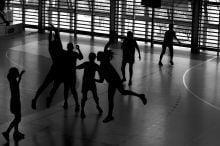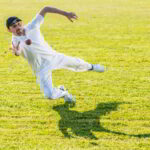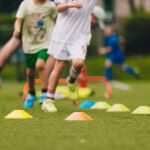As part of a recent assessment of participation in sport at our school, we reviewed the number of students taking part in physical education lessons and also extra-curricular activities.
The results showed that something had to be done in order to raise the participation levels of particular groups of students: principally the girls and the Asian and Pakistani communities.
We agreed that we could introduce more competitive sport into lessons as we felt that this would incentivise these groups to participate. In order to stimulate competition and increase the number of students attending clubs, we focused on the following areas:
- Lessons
- Extra-curricular clubs
- Activity based challenges – “row the furthest in 2 minutes” and “cycling 1km in the quickest time” and “challenge a friend”
- Fitness challenges
- Operating the fitness centre full time
Basic challenge charts were produced, displayed and verified by a member of staff during the lesson or club. We then asked students to challenge a friend; this could either be in lessons or during the extra-curricular clubs. As a result of having quick challenges and having numerous pieces of equipment, more than one person could be challenged in a short period of time.
The challenges were not restricted to certain age or year groups; a year 10, for example, could be beaten by a year 8 or 9 student. The results were constantly updated and kept in a league table format. Our fitness instructor then publicised the results and challenged teachers to compete against the students.
The results we have found include:
- Students are motivated to train in order to beat their teacher
- More girls happily attend and participate in fitness after school clubs
- More female students have become interested in fitness and health activities
- Some of these students are now devising and following their own fitness programmes
We then used the idea of “challenge a friend” and moved it into other areas of the programme of study. One area that we targeted was badminton; again an activity that did not require an age restriction or involve health and safety issues which would prevent the younger students playing against the older students.
At the end of lessons or during break time, the teacher would challenge a student to a game. Again, this inspired the students to initiate a challenge with a teacher or another student to a game; thus wanting to practice more and attend after school clubs to try and beat either the teacher or the student at the top of the league table.
Within a few weeks, the numbers had grown at the extra-curricular club. As a knock on effect, participation rates during lessons also improved, particularly from the Asian and Pakistani communities, as well as those who would normally bring a note to be excused.
The biggest increase in participation and also behaviour levels was seen in core PE lessons for year 10 and 11 pupils, as students wanted to play and compete against each other to show their ability. Competition formats were used in lessons so that students could take part in different competitions, i.e. round robins, league tables and knock outs. Students became familiar with these and transferred them into the extra-curricular clubs whilst playing with their friends.
When recognising the impact of increasing participation through competition, we realised that we needed more bodies to help run the clubs and allow the competition element to expand. Funding was therefore raised in order to pay for our 6th form, year 11 and year 10 students to achieve a variety of coaching awards including:
- Level 2 Fitness Instructors Award
- CSLA Award
- FA Referees Award
- FA Level 1 Coaching Certificate
The impact of this has allowed competitions in our more traditional clubs to be held and organised to a higher quality with 6th form, year 11 and year 10 students organising and officiating both inter- and intra-school competitions.
Other elements of our work towards increasing participation rates have included making links with external clubs and coaches in order to use our site to host area and district school competitions. For example, we have worked with Sheffield Eagles Rugby League Club to hold many Rugby League tournaments, competitions and coaching workshops at our site.
The students who had been working with professional players and coaches were inspired to encourage their friends to come to rugby training. As a result of the competitions and coaching workshops, we are now able to make a rugby team for each year group which is something that we have struggled to do previously due to having such a huge football-based community.
Overall the participation rate in both lessons and extra-curricular clubs has increased over the last 2 years. Although many factors have contributed to this, the element of competition and allowing students to compete against each other for longer periods of time in an actual full conditioned game has been, in my opinion, one of the most influential reasons.










